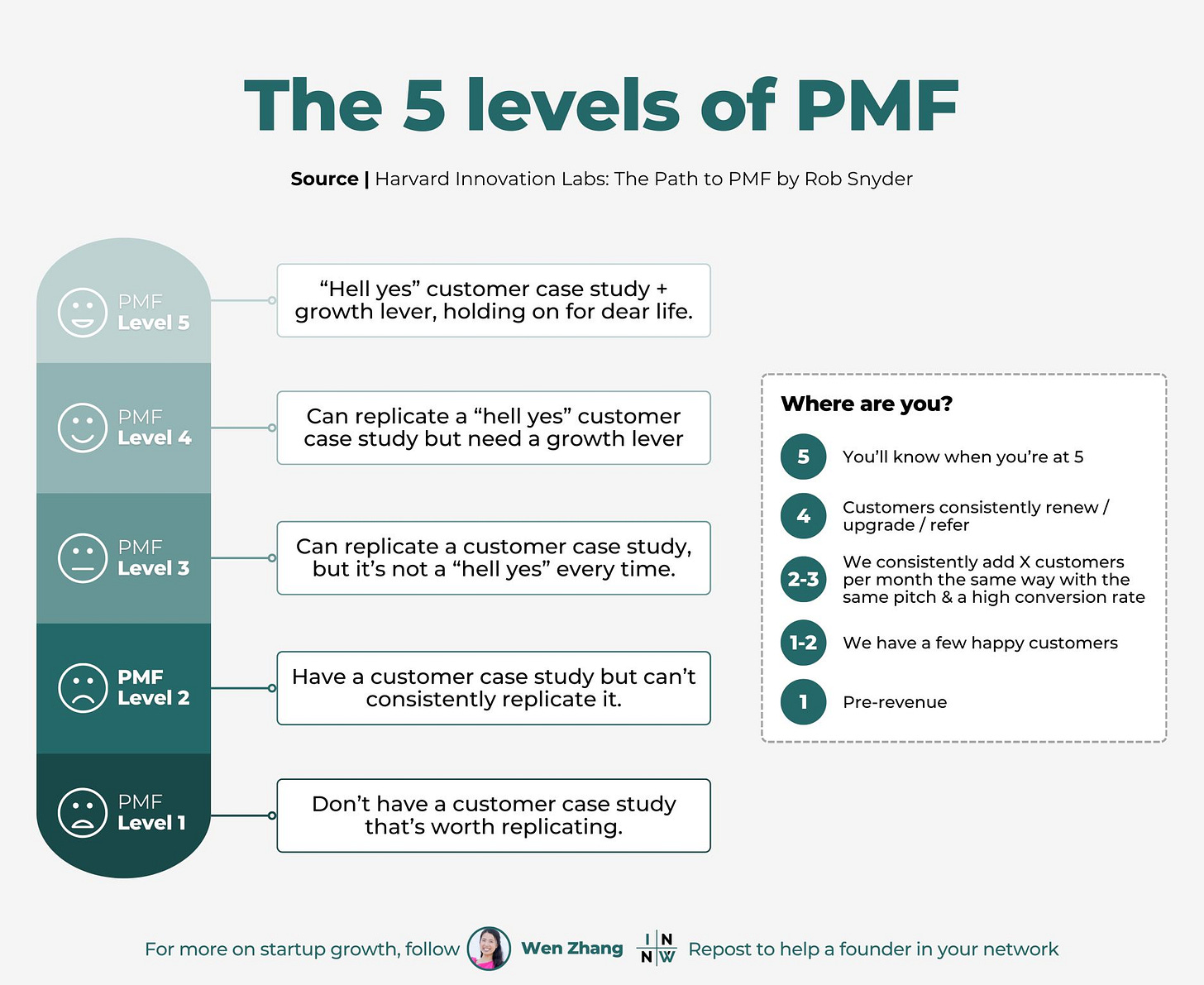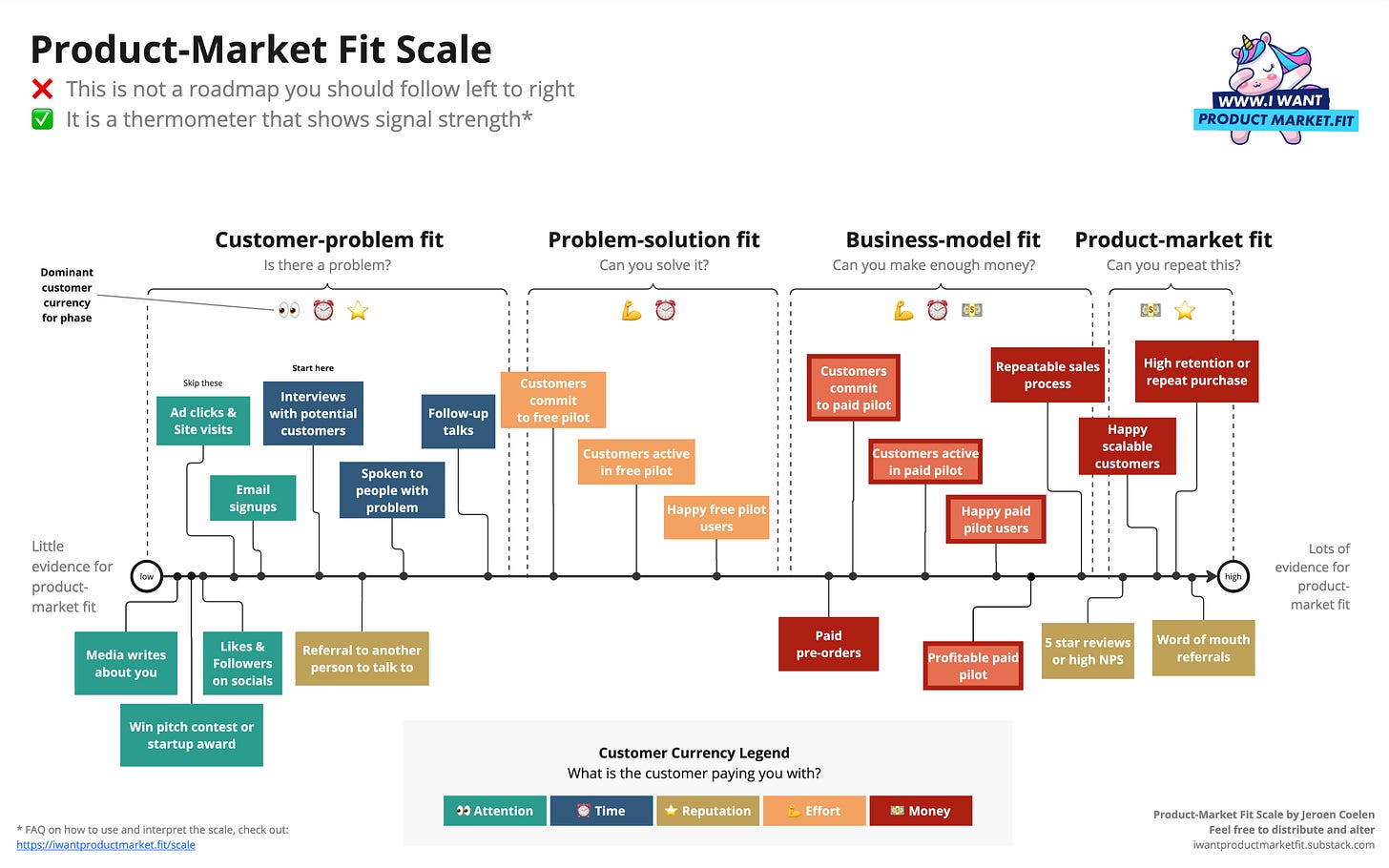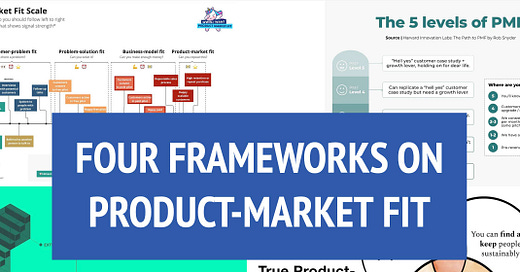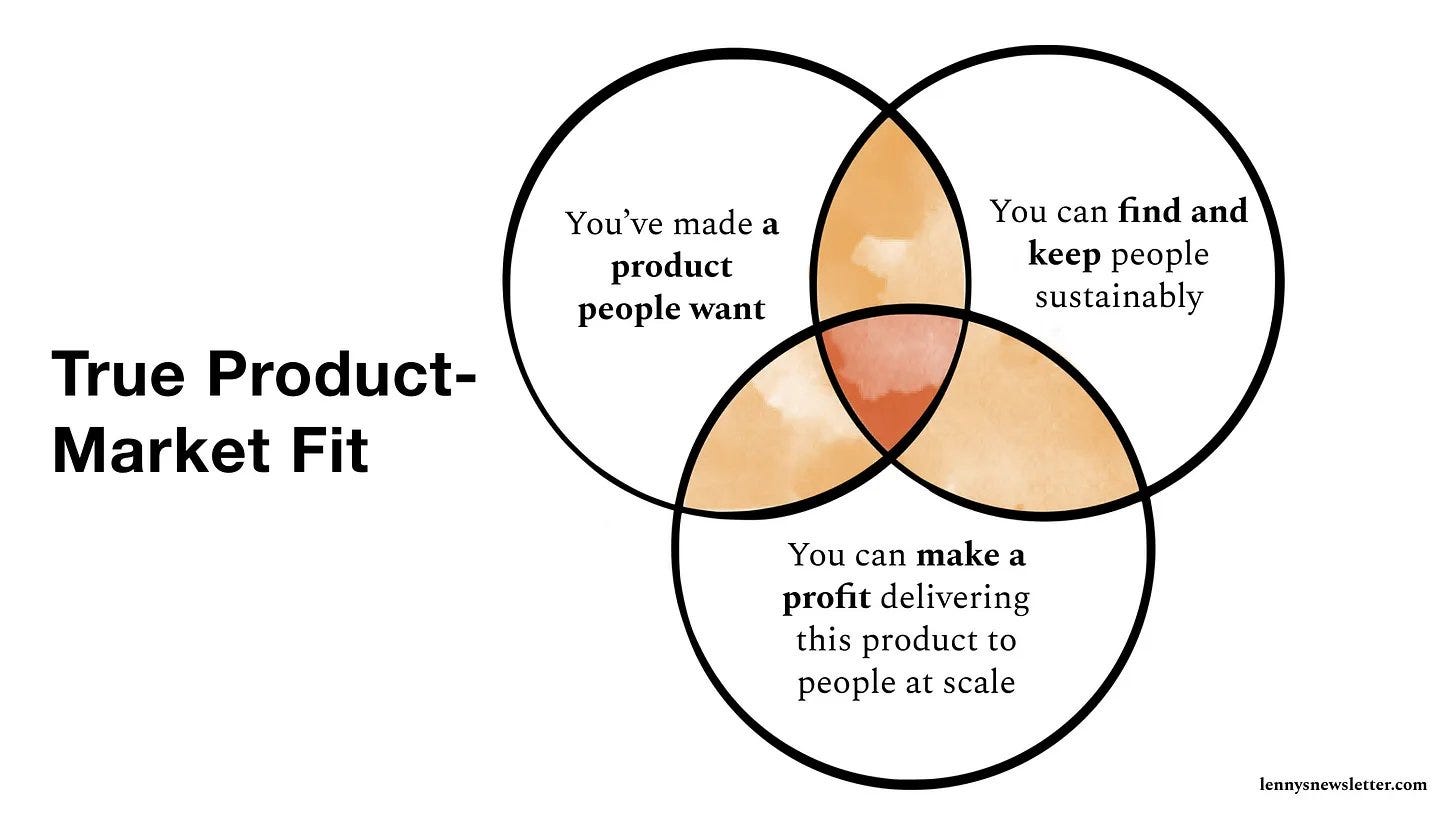Product-market fit is a confusing term.
Here are four frameworks to untangle the mess.
1. Elements of product-market fit
Pros
✅ Highlights the three important elements of product-market fit
✅ Simple language anyone can understand
Cons
❌ Doesn’t indicate levels of product-market fit
2. Four-level model
Firstround is a VC firm and has made an excellent model. He explains his model too in this podcast with Lenny.
Pros
✅ Great intro for people to understand that fit is a scale, not a binary value.
✅ Describes what things to look out for to see if you are improving your product-market fit
Cons
❌ Only covers when you already have some customers
❌ No suggestion on what to do in this step
3. Five Level Model
Wen Zhang made a beautiful visualisation based on Rob Snyder’s work.

Pros
✅ Describes what things to look out for to see if you are improving your product-market fit
✅ Gives more detail around what signals to focus on: X customers per month, same pitch, high conversation rate)
Cons
❌ While acknowledging the pre-revenue stage, steps
4. Product-market fit scale
This is my model, aimed at very early-stage startups, before the product is defined.

Pros
✅ Extreme detail on what signals to look out for
✅ Gives a suggestion of value of each signal towards getting product-market fit.
Cons
❌ Perhaps overly detailed, might be overwhelming
❌ Might suggest to move from left to right, where many signals on the left can be ignored.
Which one is your favourite?
My favourite?
Short answer: it depends. Long: To introduce people to the concept of product-market fit, I often use Lenny’s three circles. It gets the point across that this is a balancing act for the three elements. It’s very simple and self-explanatory.
If I’m working with very early-stage startups, I use my product-market fit scale. This puts people at ease to see that only talking to customers already covered 1/3rd of the scale. It helps them to think of actions ahead, get them to a paid pilot ASAP.
For more advanced startups, I sometimes use Rob’s model. Because he uses clear language, people doing sales can recognise this. The only downside is that they need to understand what Rob intends with a Use Case. It’s similar to my value logic, to explain for one very specific customer why they will buy you and what value they get.
So, there’s not really a favourite, for each purpose there are different models.





